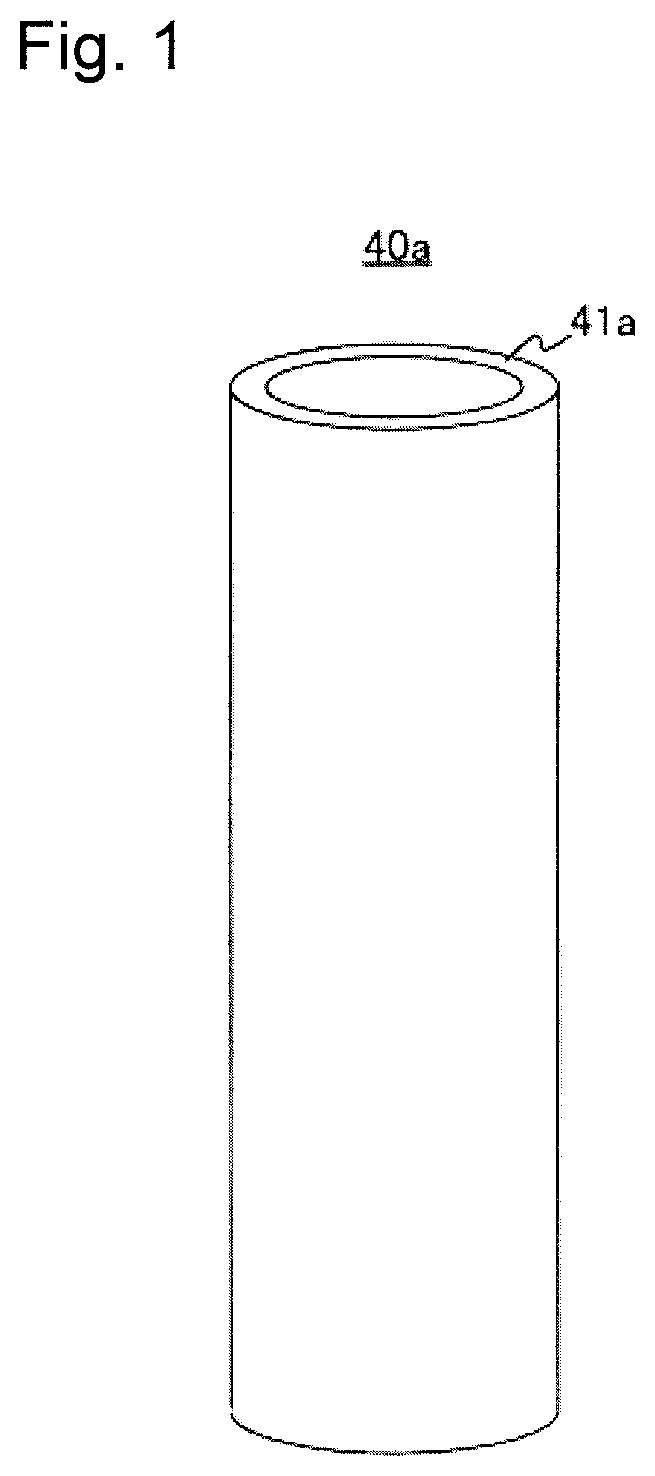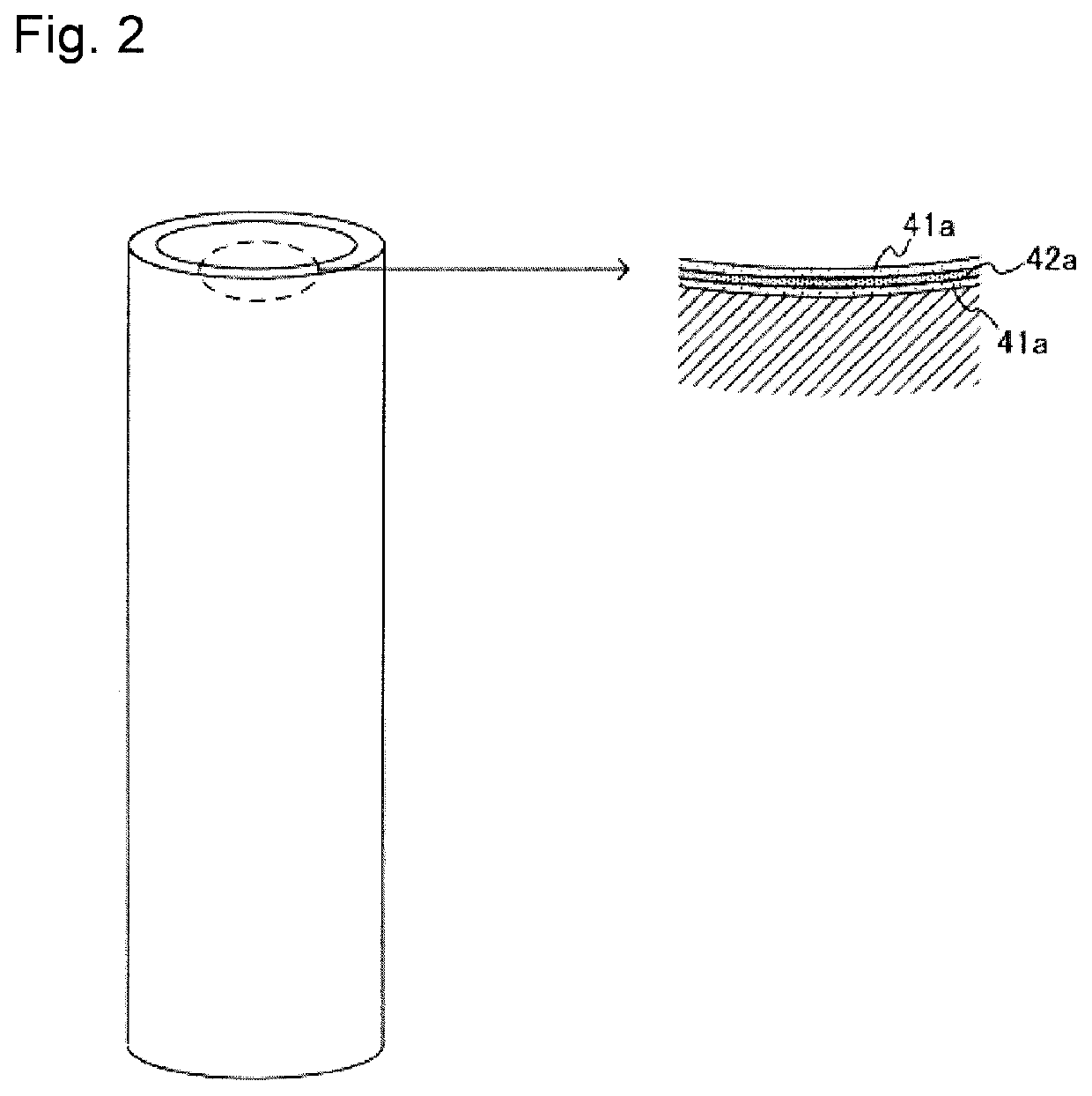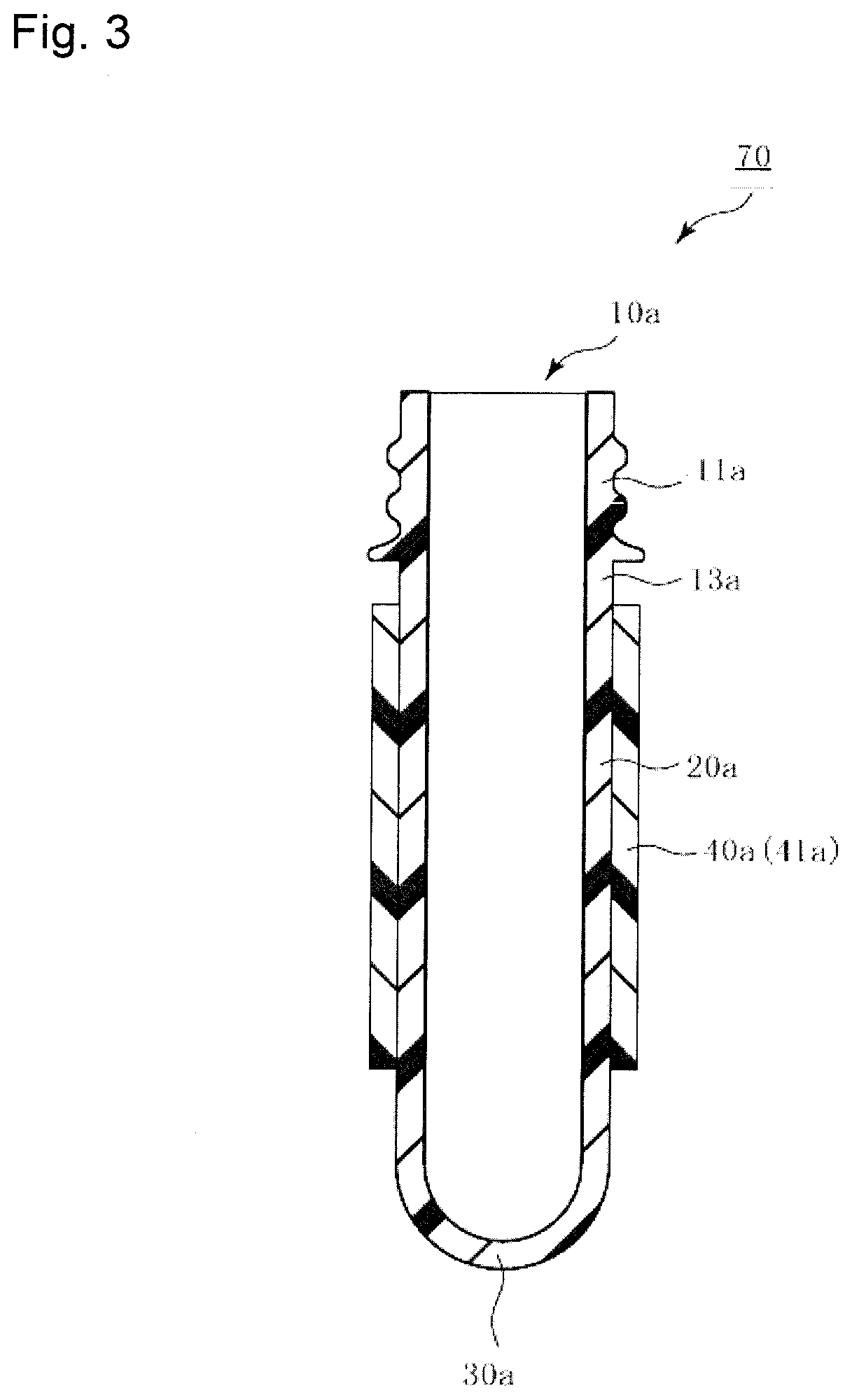Heat-shrinkable plastic element, composite preform, and composite container
a plastic element and shrinkable technology, applied in the direction of rigid containers, synthetic resin layered products, packaging, etc., can solve the problems of difficult to obtain containers including portions, limit the means for obtaining containers having various functions and characteristics, etc., to improve the insertability of preforms and improve the production efficiency of composite preforms.
- Summary
- Abstract
- Description
- Claims
- Application Information
AI Technical Summary
Benefits of technology
Problems solved by technology
Method used
Image
Examples
example 1
[0147]A mixture of 95 mass % Himilan 1706 (manufactured by DU PONT-MITSUI POLYCHEMICALS CO., LTD., MFR: 0.9 g / 10 min., storage modulus at 25° C.: 3.8×108 Pa) as (A) an ionomer resin, and 5 mass % WINTEC WFX4TA (manufactured by Japan Polypropylene Corporation, metallocene polypropylene, MFR: 7.0 g / 10 min., storage modulus at 25° C.: 1.0×109 Pa) as (B) an olefin resin was melt-extruded by a single screw extruder using an annular die, to be molded into a non-elongated tube having an inner diameter of 16.6 mm, and next this non-elongated tube was heated by hot water, and pressurized by compressed gas from the inside thereof, to be elongated, and thus a heat-shrinkable plastic element having a cylindrical shape without a bottom was made. The heat-shrinkable plastic element had an inner diameter of 28.7 mm, and a thickness of 307 μm.
example 2
[0148]A mixture of 95 mass % Himilan 1706 as (A) the ionomer resin, and 5 mass % WINTEC WFX4TA as (B) the olefin resin used for outermost layers, a 100 mass % polyolefin adhesive resin (ADMER SF731 manufactured by Mitsui Chemicals, Inc) as adhesive layers, and a mixture of a 100 mass % ethylene-vinyl alcohol copolymer (EVAL SP482B manufactured by Kuraray Co., Ltd) as a gas-barrier layer for a middle layer were each melt-extruded by a single screw extruder using a three-kind five-layer annular die, and were molded into a non-elongated tube having an inner diameter of 18.3 mm, and next this non-elongated tube was heated by hot water, and pressurized by compressed gas from the inside thereof, to be elongated, and thus a heat-shrinkable plastic element having a cylindrical shape without a bottom was made. The heat-shrinkable plastic element had an inner diameter of 28.7 mm, and a thickness of 345 μm (each outermost layer: 132 μm, each adhesive layer: 17 μm, middle layer: 47 μm).
PUM
| Property | Measurement | Unit |
|---|---|---|
| storage modulus | aaaaa | aaaaa |
| dynamic friction coefficient | aaaaa | aaaaa |
| specific gravity | aaaaa | aaaaa |
Abstract
Description
Claims
Application Information
 Login to View More
Login to View More - R&D
- Intellectual Property
- Life Sciences
- Materials
- Tech Scout
- Unparalleled Data Quality
- Higher Quality Content
- 60% Fewer Hallucinations
Browse by: Latest US Patents, China's latest patents, Technical Efficacy Thesaurus, Application Domain, Technology Topic, Popular Technical Reports.
© 2025 PatSnap. All rights reserved.Legal|Privacy policy|Modern Slavery Act Transparency Statement|Sitemap|About US| Contact US: help@patsnap.com



